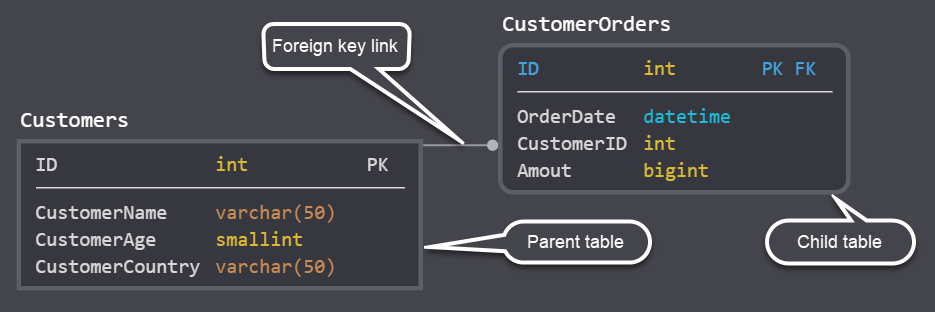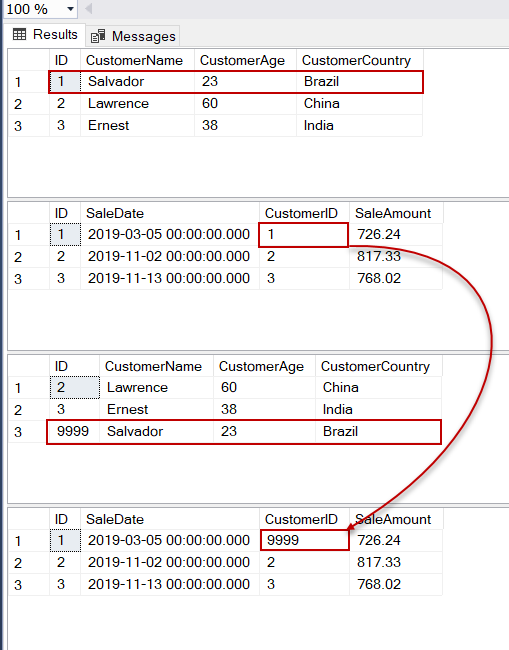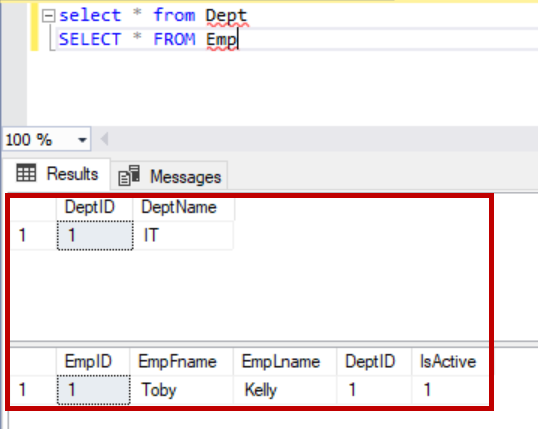Business Key Vs Foreign Key
The difference between primary key and foreign key is that primary key uses the data contained within one or many columns in the table to identify each row uniquely whereas a foreign key is a column or multiple columns in a database that points to the primary key of a database record in some other table. A unique key is the same as a primary key but it can accept one null value for a table column.

Sql Foreign Key 365 Data Science Data Science Science Blog Sql
This key is a column or group of columns that will uniquely identify a row in the table.

Business key vs foreign key. Primary keys cannot contain duplicate values but foreign keys can. A primary key cannot contain NULL values in any columns but foreign keys can. Creating and assigning durable keys allows you to work around business changes to the natural keys or to integrate duplicate or disparate data.
All tables in a relational database should not will just should have a declared primary key PK. When we talk about Foreign key we can have as many Foreign keys as we want. Surrogate Key Pros.
A foreign key doesnt enforce this but it could be if there is only one matching value. Most business organizations use databases to store data. It uniquely identifies an every record in the table.
There is a lot more to deduplicating and data integration. A primary key is used to uniquely identify a row. The value of the primary key cant be removed from the parent table whereas the value of foreign key value can be removed from the child table.
If a Primary key is used in the another table then it would be know in the another table as F oreign key which can accept multiple null value. But durable keys are just the start. Foreign key always generates after Primary key.
Primary Key never accepts null values whereas foreign key may accept multiple null values. All things considered you can physically make a list on Foreign keys. We have also said that it can be a set of columns in our first statement which is for cases where there is a need of combining more than one attribute to make the record unique.
A foreign key is a column or group of columns in a relational database table that provides a link between data in other tables. Foreign Key - A foreign key is just a referential constraint between two or more tables. It also cannot contain identical values.
Thus they do not automatically increments. This is how a one to many relationship is represented. For example if the Employee table above used a integer surrogate key you could simply add a separate column for SIN if you added an office in Canada to be used in place of SSN Less code if maintaining same key strategy across all entities.
Unique constraints are referenced by the foreign key. The main difference between primary key and foreign key is that the primary key is used to identify the records in the table uniquely while the foreign key is used to connect two table together. A primary key is a constraint on a column or set of columns.
Surrogate keys typically integers have the added-value of making your table relations faster and more economic in storage and update speed even better foreign keys do not need to be updated when using surrogate keys in contrast with business key fields that do change now and then. No business logic in key so no changes based on business requirements. The counter is a surrogate key and the business key is a natural key.
The primary key is limited to a single table and is put to uniquely identify the corresponding rows of a table. These are two different kinds of keys. Durable keys are mandatory for dealing with ambiguities in the source system natural keys.
A foreign key comes to use when we need to link tables to one another and have data spread over multiple tables. If EMPLOYEE table is taken for this example the EMP_ID will be the primary key. You can have only a single primary key in a table while you can have multiple foreign keys in a table.
A primary key is used to ensure data in the specific column is unique and not null. The primary key is grouped list and information in the table are genuinely composed in the arrangement of the bunched list while Foreign key doesnt naturally make a list bunched or not.

What Is A Foreign Key In Sql Server

Difference Between Primary And Foreign Key In Table Sql Programing Knowledge Java Programming Tutorials Sql

Database Tables Primary Keys Foriegn Keys And Relationships Learn Programming Dbms Learn Sql

The Column Name That Designates The Logical Match Is A Foreign Key In One Table And It Is Connected With A Corresponding Column Data Science Sql Science Blog

Sql Foreign Key 365 Data Science Data Science Science Blog Sql

Sql Foreign Key 365 Data Science Data Science Science Blog Sql
Creating And Managing Foreign Key Relationships Cloud Spanner

Primary Key Vs Foreign Key What S The Difference

Sql Server Performance Tuning Tip Index Foreign Key Columns Sql Server Sql Microsoft Sql Server

Recipes Data Model Sql Data Relationship Diagram

Integrity Constraints In Dbms Dbms Integrity Language

Primary Key Vs Foreign Key What Are Differences Primary Key Segmentation

What Is A Foreign Key In Sql Server

Database Design Analysis Database Foreign Key Database Design Analysis Relational Database

Foreign Key In Sql Sql Tutorial Sql Understanding

3 Alternatives To Olap Data Warehouses Data Warehouse Data Modeling Business Data

What Is A Foreign Key In Sql Server


Post a Comment for "Business Key Vs Foreign Key"